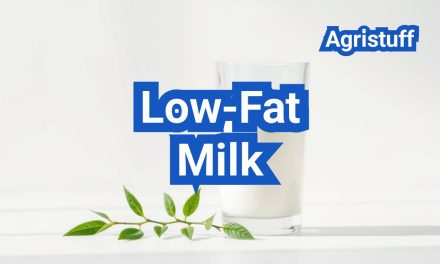A semi-soft, non-aged pasta filata cheese, originating from southern Italy, has become a staple in cuisines worldwide. This cheese is known for its stretchy texture and mild flavor, making it a favorite among pizza lovers and cheese enthusiasts alike.
The history and production process of this cheese are as fascinating as its taste. From its traditional roots to modern manufacturing techniques, there’s a lot to explore. This article will delve into the various types, processing steps, and equipment used, as well as its numerous uses in cooking.
Key Takeaways
- Understanding the origins and history of Mozzarella Cheese
- Exploring the different types and their unique characteristics
- Learning about the processing steps and equipment involved
- Discovering various uses of Mozzarella Cheese in culinary delights
- Gaining insights into the significance of Mozzarella Cheese in global cuisine
The Rich Heritage of Mozzarella Cheese
Mozzarella cheese has a rich history that spans centuries, originating in the picturesque Campania region of southern Italy. This region, known for its lush landscapes and rich agricultural land, provided the perfect conditions for the development of this iconic cheese.
Origins in Southern Italy
The origins of Mozzarella are deeply rooted in the Campania region, where it was first produced around the 12th century. Initially made from the milk of water buffalo, Mozzarella di Bufala Campana PDO (Protected Designation of Origin) remains one of the most authentic and sought-after varieties today.
Evolution Through the Centuries
Over the centuries, Mozzarella production evolved, adapting to changes in agricultural practices and consumer preferences. By the 18th century, Mozzarella had become a staple in Neapolitan cuisine, particularly as a topping for pizza. The introduction of cow’s milk Mozzarella expanded its production beyond the traditional water buffalo milk, making it more accessible worldwide.
| Century | Significant Events in Mozzarella History |
|---|---|
| 12th Century | First production of Mozzarella in Campania region |
| 18th Century | Mozzarella becomes a staple in Neapolitan cuisine |
| 20th Century | Global spread of Mozzarella, introduction of cow’s milk Mozzarella |
Global Spread and Modern Popularity
Today, Mozzarella is enjoyed worldwide, with its popularity driven by the global spread of Italian cuisine, particularly pizza. The versatility of Mozzarella, from its meltability to its flavor profile, has made it a favorite among chefs and home cooks alike. Despite its global popularity, Mozzarella di Bufala Campana PDO remains a highly prized variety, cherished for its authentic taste and texture.
Mozzarella di Bufala Campana PDO is protected by European law, ensuring that only Mozzarella produced in specific areas of Campania, Lazio, and Puglia, using traditional methods and water buffalo milk, can bear this name. This designation underscores the cheese’s heritage and quality.
What Is Mozzarella Cheese?

Understanding mozzarella cheese begins with its definition and the process that gives it a unique place in the dairy world. Mozzarella is categorized as a semi-soft cheese, primarily made from cow’s milk or, in some traditional cases, water buffalo milk. Its production involves the pasta filata method, a technique that involves heating and stretching the curd, giving mozzarella its characteristic stretchy texture.
Defining Characteristics
Mozzarella cheese is known for its soft, elastic texture and mild flavor. The pasta filata method is crucial in achieving its defining characteristics. This process involves:
- Heating the curd to a high temperature
- Stretching and folding the curd until it becomes smooth and pliable
- Shaping the cheese into its desired form, typically balls or strings
This technique not only gives mozzarella its unique texture but also its ability to melt well, making it a favorite for pizzas and caprese salads.
The Science Behind Its Stretch
The stretchiness of mozzarella is attributed to the pasta filata process, which aligns the protein fibers in the curd, creating a network that allows the cheese to stretch. As Serat Saad, a cheese technologist, notes, “The key to mozzarella’s stretch lies in its production process, where the curd is heated and stretched, aligning the casein proteins and creating its signature elasticity.”
“The pasta filata method is what sets mozzarella apart from other cheeses, giving it a unique texture that is both soft and stretchy.”
Classification in the Cheese World
In the world of cheese, mozzarella is classified as a semi-soft cheese. Its moisture content and production method place it in a distinct category, different from hard cheeses like parmesan or soft cheeses like brie. Mozzarella can be further categorized into different types based on its moisture content, such as low-moisture mozzarella and fresh mozzarella, each with its own applications in cooking.
Types of Mozzarella Cheese
The world of Mozzarella is diverse, with several types that cater to different culinary needs. Mozzarella cheese is categorized into various types based on factors like moisture content, production methods, and milk sources.
Fresh Mozzarella (Fior di Latte)
Fresh Mozzarella, also known as Fior di Latte, is made from cow’s milk. It’s characterized by its soft texture, mild flavor, and high moisture content. This type of Mozzarella is typically sold in its whey or brine to maintain freshness and is a favorite for caprese salads and pizzas.
Mozzarella di Bufala Campana PDO
Mozzarella di Bufala Campana PDO is a protected designation of origin (PDO) cheese made from the milk of water buffalo raised in specific regions of Italy. It’s known for its rich, creamy flavor and is considered a premium product. This Mozzarella is often used in high-end culinary applications where its unique taste can be appreciated.
Low-Moisture Mozzarella
Low-Moisture Mozzarella has a longer shelf life compared to fresh Mozzarella due to its lower moisture content. It’s often used in commercial pizza production because it melts well and browns nicely. This type of Mozzarella is also popular for home cooking and is available in various forms, including shredded and sliced.
Part-Skim Mozzarella
Part-Skim Mozzarella is made from a mixture of whole and skim milk, offering a balance between flavor and fat content. It’s a popular choice for those looking for a slightly healthier Mozzarella option without compromising on taste. This type is versatile and can be used in a variety of dishes, from pizzas to lasagnas.
In conclusion, the different types of Mozzarella cheese offer a range of options for various culinary applications. Understanding these types can help in selecting the most appropriate Mozzarella for specific dishes, enhancing the overall flavor and texture.
Essential Ingredients for Making Mozzarella

Mozzarella cheese making relies on a few key ingredients that determine its quality. The basic components include milk, cultures, rennet, and salt. Each of these elements plays a crucial role in the cheese-making process.
Milk Selection and Preparation
The type of milk used is fundamental to Mozzarella production. Traditionally, Mozzarella di Bufala is made from the milk of water buffalo, while other varieties often use cow’s milk. The milk must be fresh and of high quality. For a more authentic flavor, some producers use raw milk, while others prefer pasteurized milk for safety reasons.
The milk is typically standardized to a specific fat content, depending on the desired characteristics of the final product. For instance, whole milk is often used for a richer flavor, while partially skimmed milk can produce a lighter version.
Cultures and Acidification Agents
Cultures are added to the milk to convert its sugars into lactic acid, a process known as acidification. This step is crucial for developing the cheese’s flavor and texture. The most common cultures used are mesophilic or thermophilic, depending on the specific type of Mozzarella being produced.
Some recipes also include acidification agents like citric acid to help achieve the desired pH level. These agents work in conjunction with the cultures to create the optimal environment for curd formation.
Rennet Options
Rennet is an enzyme that helps coagulate the milk, turning it into curds and whey. There are different types of rennet available, including animal rennet, microbial rennet, and genetically engineered rennet. The choice of rennet can affect the flavor and texture of the Mozzarella.
Animal rennet is traditional and often preferred for its ability to produce a cleaner flavor. Microbial and genetically engineered rennets are more commonly used in commercial production due to their consistency and cost-effectiveness.
Salt and Additives
Salt is added to enhance the flavor and help preserve the cheese. The amount of salt used can vary depending on the recipe and personal preference. Some producers also use additional ingredients like calcium chloride to improve the cheese’s texture and melting properties.
Other additives might include flavor enhancers or preservatives, although these are less common in traditional Mozzarella making. The key is to keep the ingredient list simple to allow the natural flavors of the cheese to shine through.
Equipment Needed for Mozzarella Production
Mozzarella cheese production involves a range of equipment, from large-scale commercial machinery to simple home cheesemaking tools. The type of equipment used can significantly impact the quality and consistency of the final product.
Commercial Production Equipment
For commercial Mozzarella production, specialized equipment is necessary to handle large quantities of milk and to ensure efficient processing. Some of the key equipment used in commercial Mozzarella production includes:
- Large Cheese Vats: These are used for milk preparation and curdling.
- Cheese Molds: Molds are used to shape the Mozzarella into its characteristic form.
- Curd Milling Equipment: This equipment is used to cut and mix the curds to the right consistency.
- Stretching and Forming Machines: Automated machines that stretch and shape the Mozzarella to achieve the desired texture.
| Equipment | Function |
|---|---|
| Large Cheese Vats | Milk preparation and curdling |
| Cheese Molds | Shaping Mozzarella |
| Curd Milling Equipment | Cutting and mixing curds |
| Stretching and Forming Machines | Stretching and shaping Mozzarella |
Home Cheesemaking Tools
For those making Mozzarella at home, the equipment needed is more straightforward and accessible. Essential tools include:
- Large Pot: For heating the milk and curdling.
- Cheese Mold or Colander: For shaping the Mozzarella.
- Long Knife or Curd Cutter: For cutting the curds.
- Gloves or Stretching Tool: For handling and stretching the Mozzarella.
Sanitation and Safety Equipment
Regardless of whether Mozzarella is being produced commercially or at home, maintaining proper sanitation and safety is crucial. This includes:
- Sanitizing Solutions: For cleaning equipment and work surfaces.
- Protective Gear: Such as gloves and masks to prevent contamination.
- Temperature Control Equipment: To ensure that the milk and curds are kept at the correct temperature.
By using the right equipment and maintaining a clean and safe environment, producers can ensure high-quality Mozzarella cheese that meets consumer expectations.
Step-by-Step Mozzarella Cheese Making Process

The art of making Mozzarella Cheese involves a precise process that transforms simple ingredients into a delicious Italian staple. This process can be broken down into several key steps, each crucial for producing high-quality Mozzarella.
Step1: Milk Preparation and Acidification
Milk preparation is the foundation of Mozzarella production. The milk is first heated to a specific temperature, typically around 86°F (30°C), before being acidified with a starter culture. This step is crucial for developing the cheese’s flavor and texture.
The acidification process involves adding a bacterial culture that converts the milk sugar (lactose) into lactic acid. This lowers the pH of the milk, preparing it for rennet addition.
Step2: Adding Rennet and Curd Formation
Rennet, an enzyme extracted from the stomach lining of young animals, is added to the acidified milk to induce coagulation. The mixture is left to sit until it forms a clean break, indicating that the curds have fully separated from the whey.
The type of rennet used can vary, with options including animal rennet, microbial rennet, or genetically engineered rennet. The choice of rennet can affect the flavor and texture of the final product.
Step3: Cutting and Cooking the Curds
Once the curds have formed, they are cut into small pieces to release more whey and create a smooth, even texture in the final cheese. The size of the curds can vary depending on the desired Mozzarella type.
The curds are then cooked to a temperature of around 105°F (40°C) to firm them up and expel excess whey. This step is critical for developing the cheese’s characteristic stretch.
| Step | Temperature | Action |
|---|---|---|
| Milk Preparation | 86°F (30°C) | Heat and acidify milk |
| Curd Formation | Varies | Add rennet, let sit |
| Cutting and Cooking | 105°F (40°C) | Cut curds, cook |
Step4: Draining and Maturation
After cooking, the curds are drained to remove excess whey. The curds are then stretched and kneaded, either by hand or mechanically, to develop their characteristic elasticity and smoothness.
The Mozzarella is then shaped into balls or other forms and may be brined or salted to enhance flavor. The maturation process can vary in length, depending on the type of Mozzarella being produced.
“The key to making great Mozzarella is in the stretching. You want to achieve a smooth, elastic texture that melts well.” – Artisanal Cheesemaker
By following these steps and paying close attention to detail, anyone can produce high-quality Mozzarella Cheese at home or in a commercial setting.
Mastering the Art of Stretching Mozzarella

Mozzarella’s signature stretchiness is developed through a precise technique known as pasta filata. This method involves heating and stretching the curd to create the cheese’s characteristic elasticity and texture.
The Science of Perfect Elasticity
The pasta filata process is crucial for Mozzarella’s stretch. It involves heating the curd to a temperature that allows the casein proteins to align and form a network that gives Mozzarella its elasticity. The ideal temperature for stretching is between 140°F and 160°F (60°C to 71°C), where the cheese becomes pliable and can be stretched without breaking.
Hand-Stretching Techniques
Hand-stretching Mozzarella is an art that requires practice to master. It involves submerging the curd in hot water or whey, then folding and stretching it until it becomes smooth and elastic. Key tips for hand-stretching include using gloves to protect your hands from the heat and working the cheese until it reaches the desired consistency.
- Submerge the curd in hot water or whey.
- Fold and stretch the curd until it becomes smooth.
- Repeat the process until the desired elasticity is achieved.
Mechanical Stretching Methods
For commercial production, mechanical stretching methods are often used. These involve machines that can heat and stretch the curd to precise specifications. Mechanical stretching offers consistency and efficiency, making it ideal for large-scale Mozzarella production.
- The curd is fed into the machine.
- The machine heats and stretches the curd.
- The stretched Mozzarella is then formed into its final shape.
Troubleshooting Common Stretching Problems
Common issues during Mozzarella stretching include the cheese being too brittle or too soft. Adjusting the temperature and stretching time can often resolve these issues. Ensuring the curd is at the right pH and moisture level is also crucial for successful stretching.
- Check the temperature of the water or whey.
- Adjust the stretching time based on the cheese’s consistency.
- Verify the pH and moisture level of the curd.
Brining and Storage Methods

To keep Mozzarella Cheese fresh and flavorful, understanding brining and storage methods is essential. Brining, a traditional technique, not only enhances flavor but also plays a crucial role in preserving the cheese.
Traditional Brining Techniques
Traditional brining involves submerging Mozzarella in a saltwater solution. This method helps to maintain the cheese’s moisture and adds flavor. The concentration of salt in the brine can vary, but typically, a ratio of 1 part salt to 10 parts water is used.
Benefits of Brining:
- Enhances flavor
- Maintains moisture
- Extends shelf life
Storage Solutions for Different Varieties
Different types of Mozzarella require specific storage methods. For instance, fresh Mozzarella should be stored in its brine, while low-moisture Mozzarella can be wrapped in plastic or vacuum-sealed.
| Mozzarella Type | Storage Method | Shelf Life |
|---|---|---|
| Fresh Mozzarella | In brine, refrigerated | Up to 1 week |
| Low-Moisture Mozzarella | Wrapped or vacuum-sealed, refrigerated | Up to 6 months |
| Mozzarella di Bufala | In brine, refrigerated | Up to 10 days |
Maximizing Shelf Life
To maximize the shelf life of Mozzarella, it’s crucial to store it properly. For all types, keeping it away from heat sources and maintaining a consistent refrigerator temperature is key.
Tips for Longevity:
- Store in airtight containers
- Keep away from strong-smelling foods
- Monitor refrigerator temperature
Making Mozzarella at Home: A Beginner’s Guide

With the right guidance, anyone can make delicious mozzarella cheese in the comfort of their own kitchen. Making mozzarella at home is a straightforward process that requires minimal equipment and can be accomplished with either a quick recipe or a more traditional method.
30-Minute Quick Mozzarella Recipe
For those short on time, a quick mozzarella recipe is available. This method involves using citric acid and microwave heating to accelerate the cheesemaking process.
- 1 gallon whole milk
- 1/4 cup citric acid solution
- 1/2 tsp rennet
- Salt
Combine the milk and citric acid solution, then heat and stretch the curds following the specific instructions for the quick method.
Traditional Method for Authentic Results
The traditional method for making mozzarella involves a longer process that includes culturing the milk and allowing it to mature before stretching.
“The art of making mozzarella is deeply rooted in tradition, requiring patience and a gentle touch.”
Italian Cheesemaker
This method produces a more authentic flavor and texture, characteristic of high-quality mozzarella.
| Step | Traditional Method | Quick Method |
|---|---|---|
| Milk Preparation | Culturing and maturation | Citric acid addition |
| Rennet Addition | After culturing | Immediately after citric acid |
| Stretching | Hot water | Microwave heating |
Tips for Success
To ensure success when making mozzarella at home, it’s crucial to:
- Use high-quality milk
- Maintain proper sanitation
- Monitor temperature carefully
- Stretch the curds gently but thoroughly
Troubleshooting Common Problems
Common issues when making mozzarella include:
- Curds that are too soft or too hard
- Difficulty stretching
- Poor melting properties
Addressing these issues involves adjusting factors like temperature, rennet amount, and stretching technique.
Commercial Mozzarella Production in the U.S.

Commercial Mozzarella production in the United States is a multifaceted industry that combines traditional cheesemaking techniques with modern industrial processes. This blend of old and new enables the production of high-quality Mozzarella on a large scale, catering to the demands of both domestic and international markets.
Industrial Manufacturing Processes
The industrial manufacturing of Mozzarella involves several key steps, starting from milk reception and processing to curd formation, stretching, and packaging. Advanced technologies are employed to ensure consistency and efficiency throughout the production process. For instance, automated systems are used for curd cutting and stirring, while temperature control systems maintain optimal conditions for cheese development.
Moreover, many commercial producers utilize continuous production lines that allow for the streamlined manufacture of Mozzarella. These lines can be adjusted to produce different types of Mozzarella, such as low-moisture or part-skim varieties, thereby meeting diverse consumer preferences.
Quality Control Standards
Quality control is paramount in commercial Mozzarella production. Producers adhere to stringent quality standards to ensure the cheese meets consumer expectations in terms of taste, texture, and safety. This includes regular testing of milk quality, monitoring of production parameters, and inspection of the final product.
Many U.S. producers also comply with international quality standards, such as those set by the FDA or USDA, to facilitate export. Compliance with these standards involves rigorous sanitation practices, proper labeling, and adherence to specific production guidelines.
Major American Producers
The U.S. Mozzarella market is dominated by several large dairy companies and cooperatives. Companies like BelGioioso Cheese and Saputo Cheese are among the leading producers, known for their high-quality Mozzarella products. These companies have invested heavily in production technology and quality control measures to maintain their market position.
Additionally, the presence of cooperatives and smaller, artisanal producers contributes to the diversity of the Mozzarella market, offering a range of products that cater to different consumer segments.
Market Trends and Consumer Preferences
The commercial Mozzarella market in the U.S. is influenced by various trends and consumer preferences. There’s a growing demand for sustainable and environmentally friendly products, leading some producers to adopt practices like sourcing milk from local farms or using eco-friendly packaging.
Furthermore, the rise of pizza chains and the foodservice industry drives the demand for Mozzarella, with consumers increasingly seeking high-quality, melted Mozzarella for their pizzas. This has led to innovations in Mozzarella production, including the development of products with improved melting properties.
Nutritional Profile of Mozzarella Cheese

Understanding Mozzarella’s nutritional content is crucial for health-conscious consumers. Mozzarella cheese, a staple in many cuisines, offers a unique blend of nutrients that contribute to its popularity.
Caloric Content and Macronutrients
Mozzarella cheese is known for its high protein and moderate fat content. A typical serving of Mozzarella (about 28g or 1 oz) contains around 70 calories, with approximately 6 grams of protein and 5 grams of fat. The caloric content can vary depending on whether it’s made from whole, low-fat, or non-fat milk.
The macronutrient breakdown is significant for consumers monitoring their diet. Mozzarella is primarily composed of protein and fat, with minimal carbohydrates. This makes it a favorable option for low-carb diets.
Vitamins and Minerals
Mozzarella is a good source of several essential vitamins and minerals. It is particularly rich in calcium, crucial for bone health, and phosphorus, important for many bodily functions including bone formation and energy production. Additionally, Mozzarella contains vitamins like B12 and riboflavin, contributing to its nutritional value.
Comparing Different Mozzarella Types
The nutritional profile of Mozzarella can vary significantly depending on its type. For instance, Mozzarella di Bufala Campana, made from the milk of water buffalo, may have a different fat content and nutrient profile compared to traditional cow’s milk Mozzarella. Low-moisture Mozzarella tends to have a higher protein content and is often preferred for its melting properties.
| Mozzarella Type | Calories (per 28g) | Protein (g) | Fat (g) |
|---|---|---|---|
| Whole Milk Mozzarella | 70 | 6 | 5 |
| Low-Moisture Mozzarella | 80 | 7 | 6 |
| Part-Skim Mozzarella | 60 | 6 | 3.5 |
Health Benefits and Considerations
While Mozzarella can be part of a healthy diet due to its high protein and calcium content, it’s also important to consider its fat content and calorie density. Moderation is key, especially for those watching their weight or managing dietary fat intake. The health benefits of Mozzarella include supporting bone health and providing essential nutrients.
In conclusion, Mozzarella cheese offers a rich nutritional profile that can fit into various dietary needs when consumed mindfully. Understanding its nutritional content helps consumers make informed choices.
Culinary Uses of Mozzarella Cheese

Mozzarella cheese is a versatile ingredient used in various culinary applications. Its melting properties and mild flavor make it a favorite among chefs and home cooks alike.
Pizza Applications
Mozzarella is perhaps most famously used on pizzas, where its melting properties create a smooth, stretchy texture that complements the savory flavors of tomato sauce and various toppings. Low-moisture Mozzarella is particularly popular for pizzas due to its excellent melting characteristics and longer shelf life.
Italian Classics
In Italian cuisine, Mozzarella is a key ingredient in several classic dishes. The Caprese salad, for instance, showcases fresh Mozzarella alongside ripe tomatoes and basil, dressed with olive oil. Mozzarella is also used in lasagna and other baked pasta dishes, adding richness and depth to these comfort foods.
Mozzarella Sticks and Fried Applications
Mozzarella’s melting properties make it an ideal candidate for fried dishes. Mozzarella sticks, breaded and deep-fried, are a popular snack or appetizer. Additionally, Mozzarella can be used in fried cheese sandwiches or as a topping for fried dishes, adding a creamy, melted element.
Creative Modern Uses
Beyond traditional Italian dishes, Mozzarella is being used in innovative ways in modern cuisine. Chefs are incorporating Mozzarella into fusion dishes, using it as a topping for burgers or as an ingredient in gourmet grilled cheese sandwiches. The versatility of Mozzarella cheese continues to inspire creativity in the kitchen.
Quality Assessment and Selection
Understanding how to assess the quality of Mozzarella cheese is essential for making informed purchasing decisions. Whether you’re a culinary professional or a home cook, the quality of Mozzarella can significantly impact the outcome of your dishes.
Visual Indicators of Good Mozzarella
When selecting Mozzarella, the first step is to examine its visual appearance. High-quality Mozzarella typically has a:
- Bright, shiny appearance
- Uniform color, depending on the type (e.g., white for traditional Mozzarella)
- Absence of visible mold or discoloration
For fresh Mozzarella, it’s also important to check that it’s stored in its brine, indicating it’s been properly handled.
Texture and Flavor Profiles
The texture and flavor of Mozzarella are crucial indicators of its quality. Good Mozzarella should have:
- A soft, elastic texture that stretches when pulled
- A mild, creamy flavor, with a slight tanginess
For Mozzarella di Bufala Campana PDO, the flavor profile is richer and more complex, reflecting its traditional production methods and high-quality milk.
Reading Labels and Certifications
Understanding labels and certifications is vital for ensuring you’re purchasing high-quality Mozzarella. Look for:
- PDO (Protected Designation of Origin) labels for authenticity
- Information on milk source (e.g., water buffalo or cow)
- Production methods and ingredients
Certifications like PDO guarantee that the Mozzarella is produced according to traditional methods and within a specific geographical area, ensuring a certain level of quality.
Price Points and Value Considerations
The price of Mozzarella can vary significantly based on its type, production methods, and certifications. While it’s tempting to opt for the cheapest option, consider the value:
- High-quality Mozzarella may be more expensive but offers better taste and texture
- Artisanal or PDO Mozzarella may justify higher prices due to traditional production methods and superior quality
Ultimately, the best Mozzarella for your needs balances quality, price, and intended use.
Dietary Adaptations and Alternatives
The versatility of Mozzarella cheese is being redefined with lactose-free, low-fat, and plant-based options. As consumers become more health-conscious and dietary restrictions become more prevalent, the demand for alternative Mozzarella products has increased significantly.
Lactose-Free Mozzarella Options
Lactose-free Mozzarella is designed for individuals with lactose intolerance, allowing them to enjoy this beloved cheese without discomfort. Key features include the use of lactase enzyme to break down lactose, making it easily digestible.
- Retains the original Mozzarella taste and texture
- Ideal for pizzas, caprese salads, and lasagnas
- Widely available in supermarkets and online
Low-Fat and Part-Skim Varieties
For those looking to reduce their fat intake, low-fat and part-skim Mozzarella varieties offer a healthier alternative without compromising on flavor. Part-skim Mozzarella, in particular, strikes a balance between taste and nutritional value.
- Lower calorie count compared to full-fat Mozzarella
- Suitable for health-conscious consumers and fitness enthusiasts
- Often recommended for weight management diets
Plant-Based Mozzarella Alternatives
Plant-based Mozzarella alternatives cater to vegans and those with dairy allergies, offering a cruelty-free and sustainable option. Made from various plant sources such as nuts, soy, and tapioca starch, these alternatives are gaining popularity.
- Crafted from a variety of plant-based ingredients
- Free from dairy, making it suitable for vegans
- Innovative production methods ensure a Mozzarella-like experience
In conclusion, the evolution of Mozzarella cheese to include lactose-free, low-fat, and plant-based alternatives reflects the dairy industry’s adaptability to changing consumer preferences. Whether you’re lactose intolerant, watching your fat intake, or following a plant-based diet, there’s a Mozzarella alternative available for you.
Troubleshooting Mozzarella Making Problems
The art of Mozzarella making requires patience and the ability to overcome various obstacles. Despite careful planning, issues can arise during production, affecting the quality of the final product.
Curd Formation Issues
Curd formation is a critical step in Mozzarella production. Problems in this stage can lead to undesirable texture and flavor. Common issues include:
- Insufficient curdling
- Over-acidification
- Incorrect temperature control
To address these issues, it’s essential to monitor the milk’s pH level and temperature closely. Adjusting the amount of rennet or acidification agents can help achieve the desired curd consistency.
Stretching Difficulties
Stretching is a defining characteristic of Mozzarella cheese. However, achieving the perfect stretch can be challenging. Common stretching difficulties include:
- Curd that is too cold or too hot
- Insufficient maturation time
- Incorrect salt concentration
To overcome these challenges, cheesemakers can adjust the temperature of the water used for stretching and ensure that the curd has reached optimal maturity.
Texture and Flavor Problems
The texture and flavor of Mozzarella are crucial to its quality. Issues such as a too-soft or too-hard texture, or off-flavors, can arise from various factors, including:
- Incorrect milk fat content
- Inadequate aging
- Contamination
Maintaining high-quality milk and adhering to proper sanitation practices can help mitigate these issues. Additionally, adjusting the fat content or aging time can improve the texture and flavor.
Storage-Related Issues
Proper storage is vital to maintaining the quality of Mozzarella cheese. Common storage-related problems include:
- Over-brining
- Inadequate refrigeration
- Exposure to air
To address these issues, it’s crucial to brine Mozzarella for the correct amount of time and store it in a sealed container at the appropriate refrigeration temperature.
By understanding and addressing these common problems, cheesemakers can improve their Mozzarella production and achieve a higher quality final product.
At The End of: Mozzarella Cheese
Mozzarella Cheese has proven to be a versatile and enduring ingredient in global cuisine, particularly in Italian cooking. From its rich history in Southern Italy to its modern-day applications, Mozzarella has evolved while maintaining its unique characteristics.
The process of Mozzarella Making involves a delicate balance of ingredients, equipment, and techniques. Whether produced commercially or at home, the art of crafting Mozzarella requires attention to detail and a understanding of the cheese’s defining properties.
Mozzarella Uses extend far beyond traditional pizza and caprese salads. This cheese is a staple in many Italian dishes and has found its way into modern recipes, showcasing its adaptability and widespread appeal.
As consumers become more discerning about the quality and origin of their food, Mozzarella Cheese continues to be a popular choice. Its various types, including Mozzarella di Bufala Campana PDO, offer a range of flavors and textures that cater to different tastes and dietary preferences.
In conclusion, Mozzarella Cheese remains a beloved ingredient, cherished for its creamy texture, mild flavor, and versatility in cooking. As the culinary world continues to evolve, Mozzarella is sure to remain a timeless treasure, enjoyed by people around the world.
FAQ
What is Mozzarella Cheese?
Mozzarella is a type of semi-soft, non-aged cheese originating from southern Italy, typically made from cow’s or water buffalo’s milk.
What are the different types of Mozzarella Cheese?
The main types include Fresh Mozzarella (Fior di Latte), Mozzarella di Bufala Campana PDO, Low-Moisture Mozzarella, and Part-Skim Mozzarella, each with distinct characteristics and uses.
How is Mozzarella Cheese made?
Mozzarella production involves milk preparation, acidification, rennet addition, curd formation, cutting, cooking, draining, and stretching, followed by shaping and brining.
What is the significance of the pasta filata method in Mozzarella production?
The pasta filata method involves heating and stretching the curd, giving Mozzarella its characteristic stretchy texture and is crucial for achieving the cheese’s signature elasticity.
Can Mozzarella Cheese be made at home?
Yes, Mozzarella can be made at home with the right equipment and ingredients, following a step-by-step process that includes milk preparation, curd formation, and stretching.
What are the nutritional benefits and drawbacks of Mozzarella Cheese?
Mozzarella is a good source of protein, calcium, and vitamins, but its nutritional profile varies by type, with factors like fat content and processing affecting its healthiness.
How should Mozzarella Cheese be stored?
Mozzarella should be stored in brine or a sealed container in the refrigerator to maintain freshness, with the storage method varying depending on the type of Mozzarella.
What are some common issues encountered during Mozzarella making, and how can they be resolved?
Common problems include curd formation issues, stretching difficulties, and texture or flavor problems, which can be addressed by adjusting factors like temperature, pH, and ingredient quality.
Are there lactose-free or dairy-free Mozzarella alternatives?
Yes, there are lactose-free Mozzarella options made with lactase enzyme, and dairy-free alternatives made from plant-based ingredients like nuts, soy, or tapioca.
How is Mozzarella Cheese used in cooking?
Mozzarella is a versatile cheese used in pizzas, Italian classics like lasagna and caprese salad, fried applications, and modern creative dishes, valued for its meltability and stretch.
What is the difference between Fresh Mozzarella and Low-Moisture Mozzarella?
Fresh Mozzarella has a high moisture content and is typically used soon after production, while Low-Moisture Mozzarella has been aged slightly, making it more suitable for grating or shredding.
Can Mozzarella Cheese be frozen?
While Mozzarella can be frozen, it’s not recommended as it can affect the cheese’s texture and quality; however, Low-Moisture Mozzarella can be frozen with less impact on its usability.
Conclusion of: Mozzarella Cheese
What is Mozzarella Cheese?
Mozzarella Cheese is a fresh, mild, stretchy “pasta filata” (stretched-curd) cheese with a clean milky flavor and elastic bite, making Mozzarella Cheese a staple in U.S. kitchens for pizza, pasta bakes, and sandwiches. Unlike longer-aged cheeses, Mozzarella Cheese is typically eaten young and is prized for its moisture, delicate aroma, and superb meltability. Encyclopaedia Britannica – Mozzarella overview
A Brief History and Origin
Mozzarella Cheese traces its roots to southern Italy, especially Campania, where artisans traditionally “mozzare” (to cut) the hot curd by hand, giving Mozzarella Cheese its name and distinctive ball shapes. Over time, local know-how became codified traditions that still guide premium production today. Consorzio di Tutela Mozzarella di Bufala Campana – History
Protected Names (PDO) and Labeling
Within the EU, Mozzarella Cheese labeled “Mozzarella di Bufala Campana” is a Protected Designation of Origin (PDO) product made with water-buffalo milk in specific regions, helping buyers distinguish authentic origin and methods; in the U.S., Mozzarella Cheese is commonly cow-milk based (fior di latte) unless marked otherwise. Consortium – What the PDO means
Main Types in the U.S. Market
Mozzarella Cheese generally falls into two broad categories: fresh mozzarella (high moisture, often packed in water/whey) and low-moisture mozzarella (firmer, ideal for shredding and pizza). U.S. standards of identity define Mozzarella Cheese types such as whole-milk, part-skim, and low-moisture varieties with specific moisture and fat ranges. eCFR – 21 CFR §133.155 Mozzarella
Common Sizes of Fresh Mozzarella Cheese
In retail, fresh Mozzarella Cheese comes in sizes with Italian names—ciliegine (cherry-size), bocconcini (bite-size), ovoline (egg-size), perline (pearl-size)—so cooks can match Mozzarella Cheese format to salads, appetizers, skewers, or sandwiches. Wisconsin Cheese – Fresh mozzarella formats
Ingredients and Cultures Behind Mozzarella Cheese
Mozzarella Cheese is made from cow’s milk or water-buffalo milk with starter cultures and rennet; thermophilic cultures drive acidification, which later enables Mozzarella Cheese curd to stretch. Milk quality, starter activity, and rennet dose all influence texture, flavor, and yield. NCBI (peer-reviewed) – Pasta filata/melting science
Processing Steps (Pasta Filata) in Plain English
The core stages for Mozzarella Cheese are: coagulate milk, cut curd, drain whey, allow acid development, heat the curd, stretch/knead, shape, cool, and salt. The hot stretching aligns proteins into long, elastic fibers that give Mozzarella Cheese its signature “pull.” University of Guelph – Cheese Technology e-book
Why pH Matters for Mozzarella Cheese
The curd for Mozzarella Cheese becomes optimally stretchable at a target acidity: culture-acidified curd is typically stretched near pH ~5.2–5.3, while direct-acid methods may stretch slightly higher. Hitting the right pH helps Mozzarella Cheese achieve a clean melt and limits oiling-off on pizza. NCBI – Stretching & pH in pasta filata
Temperature and Stretching Mechanics
During stretching, Mozzarella Cheese curd is heated to roughly 55–65 °C before kneading and elongation; too harsh a treatment can reduce elasticity and increase free oil. Balancing heat and mechanical work ensures Mozzarella Cheese maintains structure yet melts beautifully. NCBI – Thermo-mechanical effects
Shaping, Cooling, Brining, and Packaging
Once stretched, Mozzarella Cheese is molded (balls, logs, or blocks), cooled to set the matrix, and salted—often via brine—to enhance flavor. For fresh styles, packing Mozzarella Cheese in whey or lightly salted water preserves moisture and tenderness. Tetra Pak – Pasta filata (mozzarella) solutions
The Equipment Behind Modern Mozzarella Cheese
Industrial Mozzarella Cheese lines use pasteurizers, vats, curd mills, cooker-stretchers, moulders, and brining systems, often with automated controls for pH and temperature. Production-scale cooker-stretchers help Mozzarella Cheese manufacturers achieve consistent texture and throughput. Tetra Pak – Cooker Stretcher (spec example)
Steam-Stretch Alternatives
Some plants make Mozzarella Cheese with steam-stretch systems rather than hot water, improving energy efficiency and process control; the stretched curd then feeds drum or block moulders for rapid shaping and chilling of Mozzarella Cheese. GEA – Steam stretching machines
Fresh vs. Low-Moisture: How They Perform
Fresh Mozzarella Cheese is moist and delicate for salads and gentle heat, while low-moisture Mozzarella Cheese shreds neatly and browns predictably on pizza. Moisture, pH, and proteolysis govern melt and stretch, so choose Mozzarella Cheese style based on your intended use. Cheese Science Toolkit – Melt & stretch
U.S. Standards of Identity to Read on Labels
In the U.S., Mozzarella Cheese names like “low-moisture,” “part-skim,” and “low-moisture part-skim” are regulated, with defined moisture and fat thresholds ensuring consistent labeling and performance in Mozzarella Cheese products nationwide. eCFR – 21 CFR §133.158 (LMPS Mozzarella)
Nutrition Snapshot (Typical Serving)
A 1-oz (28 g) serving of part-skim, low-moisture Mozzarella Cheese often provides ~70–85 kcal, ~6–7 g protein, ~4–5 g fat, and ~1 g carbs, while whole-milk Mozzarella Cheese is higher in fat/calories; always confirm the Nutrition Facts panel on your Mozzarella Cheese package. MyFoodData – Mozzarella (USDA-based)
Food Safety and Pasteurization
For pregnant people and other higher-risk groups, pasteurized Mozzarella Cheese is the safer choice; avoid unheated fresh soft cheeses made from unpasteurized milk, and handle ready-to-eat Mozzarella Cheese hygienically to minimize listeria risk. CDC – Listeria prevention: dairy
Culinary Uses That Play to Its Strengths
Thanks to its stretch and clean dairy notes, Mozzarella Cheese excels on pizza, baked pasta, panini, and classic Caprese salads; fresh balls of Mozzarella Cheese soften luxuriously over warm dishes, while low-moisture shreds provide even browning and sliceable melt. Encyclopaedia Britannica – Culinary overview
Buying Tips for U.S. Shoppers
Match Mozzarella Cheese to the job: choose fresh Mozzarella Cheese in liquid for salads and appetizers, and pick low-moisture blocks or shreds for pizza and casseroles. Regulatory definitions on Mozzarella Cheese labels (e.g., “part-skim,” “low-moisture”) indicate composition and expected performance. eCFR – 21 CFR Part 133 (Cheeses)
Storage and Shelf Life
Fresh Mozzarella Cheese is highly perishable and best within a few days of opening (keep Mozzarella Cheese submerged in its liquid), while low-moisture Mozzarella Cheese lasts longer when sealed and refrigerated; for broad home storage guidance, follow U.S. food safety timelines. U.S. FoodSafety.gov – FoodKeeper storage guidance
Pizza Performance: Getting Great Stretch
The best pizza stretch from Mozzarella Cheese comes from the right moisture, pH, and level of proteolysis; too much acid can create oiling-off and snap, while insufficient acid makes Mozzarella Cheese rubbery. Controlled aging helps balance flavor with melt. Cheese Science Toolkit – Melt chemistry
Related Styles (Burrata, Scamorza, Provolone)
Mozzarella Cheese is part of the broader pasta filata family: burrata encloses cream/stracciatella in a mozzarella pouch, while scamorza and provolone are drier and often aged or smoked; understanding these cousins helps you sub for Mozzarella Cheese when needed. Encyclopaedia Britannica – Burrata
Regulations Recap for Label Readers
When a package says “low-moisture,” “part-skim,” or “low-moisture part-skim,” that Mozzarella Cheese claim reflects specific federal standards, not mere marketing; these rules help consumers predict flavor, browning, and texture in Mozzarella Cheese. eCFR – Cheese standards (Part 133)
Final thought
Whether you want luscious medallions for Caprese or a perfectly blistered pizza top, choosing the right style of Mozzarella Cheese—and understanding its pH-driven stretch, moisture levels, and U.S. labeling—lets you get repeatable, delicious results with Mozzarella Cheese at home or in foodservice. University of Guelph – Fundamentals of cheese technology
Sources & References
- Encyclopaedia Britannica – Mozzarella
- eCFR – 21 CFR §133.155 Mozzarella
- eCFR – 21 CFR §133.158 LMPS Mozzarella
- eCFR – 21 CFR Part 133 (Cheeses)
- NCBI (peer-reviewed) – Pasta filata/melting science
- University of Guelph – Cheese Technology e-book
- Cheese Science Toolkit – Melt & stretch
- Wisconsin Cheese – Fresh mozzarella formats
- Tetra Pak – Pasta filata solutions
- Tetra Pak – Cooker Stretcher
- GEA – Steam stretching machines
- MyFoodData – Mozzarella (USDA)
- CDC – Listeria prevention
- U.S. FoodSafety.gov – FoodKeeper










